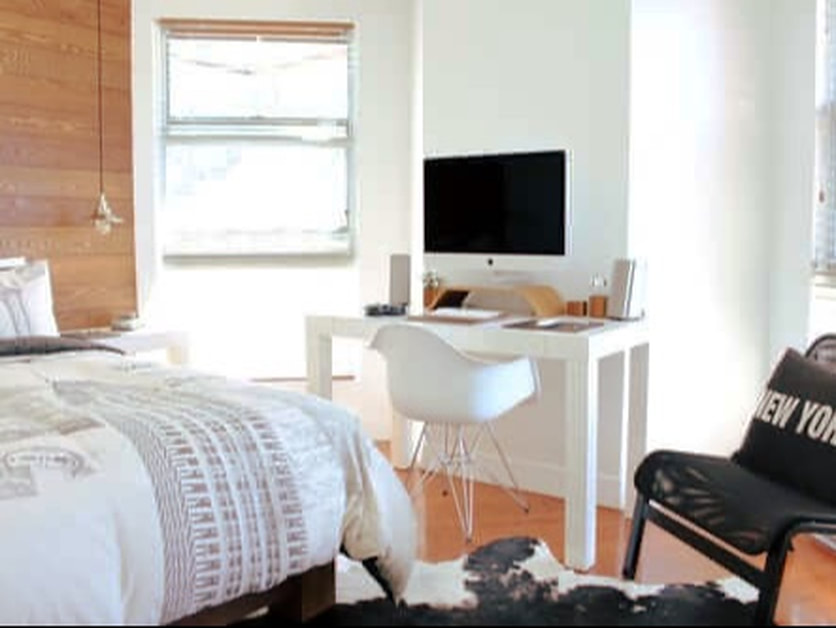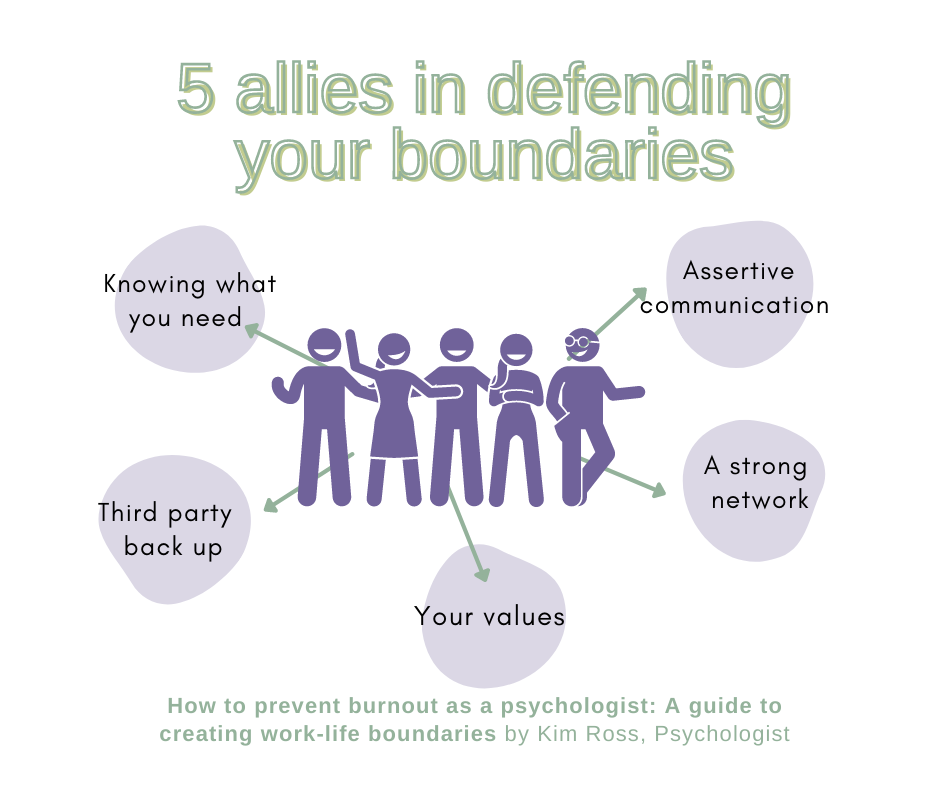|
Creating work-life boundaries is a key to preventing burnout, but how on earth do you keep your work and home separate in the middle of pandemic?
Are you struggling to keep it all together? We are going to be living with the impact of COVID-19 in one form or another for the foreseeable future. Coping with anxiety, psychological distress caused by COVID-19 is significant challenge. And then there are the more practical challenges, like trying to keep work and home separate. Are you working out of your bedroom, or your living room, or side by side with your children at the kitchen table?
0 Comments
Do you want to have a sustainable private practice? One way of preventing burnout is through having clear distinctions between home and work, not always easy. Although some seepage from one to the other is normal, you want to avoid a clear take over where you are not at your best in either space. Staying in control of your work-life balance and protecting your time, energy and values is an ongoing process. Whether you are working from home, going into work or using a hybrid model, here are my top 9 strategies to help you create and defend strong workplace boundaries.
1. Identify what matters most to you Finding the confidence to set and protect your boundaries is difficult, particularly for early career psychologists. Certain boundaries in a work setting are clear. These include legal, professional and some ethical boundaries. Other boundaries are more flexible and negotiable. Where you choose to place these boundaries is influenced by your needs, beliefs, resources, and intentions. After you consider legal and ethical requirements that come with being a psychologist, it’s time to consider your values. As a professional you have many decisions, including who you work with, what you charge, when you work, what modality you use, what resources you buy, how you want to work.
If you’re not clear about your boundaries, spending time reflecting on your value is an important step. 2. Identify recurring stressors Make time for regular reflection and bring awareness to your current work situation. How do you feel when you:
The above are some potential areas of recurring stressors that contribute to workplace burnout AND opportunities or threats to your boundaries. Identifying recurring stressors are a good place to stop and think about your boundaries.
Too much incongruence between your values and those of your workplace will create a situation where your boundaries feel under constant attack. 3. Clarify role expectations It’s clear from my conversations with other psychologists that role expectations vary, often dramatically, between workplaces. And the lines between being a subcontractor or employee can be blurred. One clinician stated that at "My other clinic I feel confused by, in terms of am I an employee or a contractor. It feels quite grey, rather than black and white, which leaves me at times confused as to accountability and responsibility and who is managing the risk". Legal advice on whether you are an employee or a subcontractor is recommended. And then this helps the next step, of fully clarifying your contract details. Read your contract and position description. Write down your interpretation of what the contract means. Check your interpretation with your employers understanding. Work through ambiguities. If you are employed, check it with any relevant legislation including workspace, and think about asking a lawyer to check through it as well. Areas to ensure you understand include who is responsible for areas such as
Outside of work, do people in your life understand what you do?
My other clinic I feel confused by, in terms of am I an employee or a contractor. It feels quite grey, rather than black and white, which leaves me at times confused as to accountability and responsibility and who is managing the risk".  4. Set realistic expectations of your time and energy Remember that drive to impress when starting out? The need to do more to quiet you inner Imposter Syndrome? It’s not sustainable. Do you want to be working these hours, taking on these responsibilities in two years’ time? If you don’t, stop setting up unsustainable expectations. Whilst flexible boundaries are important in helping you adjust to the changing demands that are part of managing the ebb and flow that is work-life balance, there comes a tipping point. This occurs when your mindful decision to do more, to bring work home, to talk about work at home, becomes less of a choice and more of a reflection of a loss of control about keeping work-life separate. This seepage is an indicator that you are slipping towards overwhelm and burnout. Think about your current individual situation.
The digital time black hole The time spent reading, organising and responding to emails is estimated to take hours each day; it is a big productivity drain. If you want to check for yourself you can track your time and see for yourself how much time and energy you take with this task. Digital time drains include engaging in tasks such as responding to emails / phones and texts from your workplace and/or clients outside of hours.
If the digital world is overwhelming, a regular digital declutter can help. 5. Make Imposter Syndrome your best business buddy The imposter is that pesky voice in your head that tells you that you aren’t good enough, you don’t know enough, you can’t do that, even when there is plenty of evidence to the contrary When that pesky voice is driving you to do more, to be more, this has a direct impact on your time and energy levels. It can mean putting your hand up to do things that aren’t your responsibility to prove something to yourself and others. It can mean putting in extra hours so you know just what to say and do in the next session with a particular client. You can flip this though. When Imposter Syndrome is reframed to be the quiet voice of questioning and curiosity it can be your best business buddy. Sit down and listen to it and let it guide you into doing a reality check.
As a bonus, the Imposter Syndrome can help test out the congruence of your workplace setting as well as strengthen your interpersonal boundaries. Identifying people you trust can result in lowering your boundaries in some areas and lifting them in others.
6. Own your diary You are a limited resource. No matter how hard you work, there is still only 24 hours in a day. Use your diary as a tool. Mark in your self-care time, and any other time that is important to you. Mark in your holidays. Don't let admin fill your diary out until the end of the year without breaks. Do that client audit and work out how many client hours you are doing a week. Is this sustainable? During times of crisis many psychologists report a need to ‘step up’ and do more for their community. Whilst this may be sustainable in the short term, it can create a chronic lack of control over work-life imbalance leading into burnout.
Whilst flexible boundaries are important in helping you manage the changing demands that are part of the ebb and flow of work-life balance, there comes a tipping point 7. Have clear work policies and procedures Your work setting will have these policies and procedures. Official policies include, but are not limited to, missed appointments, working with separated parents, social media, how you communicate with clients etc. However, there are likely to be gaps. And if you are a solo psychologist, you will be creating your own policies and procedures. Create your policies to not only include necessary legal, professional and ethical obligations, but to also prioritise your self-care. Think about:
Even though you are only one person, having established policies helps you create and maintain work-lifeboundaries. They add clarity for both you and your clients and help you avoid the stress of making decision making on the run). *As a note - people do sell their policies. They take time to develop and it is rude to ask people to share them for free. 8. Establish a work-life transition process Having a mindful routine that helps delineate work from home is helpful in letting your mind know that work is done for the day. Being able to rest from work demands is essential in maintaining control of your work-life balance. Some strategies include:
Do you have a favourite transition strategy? 9. The five allies you need to defend your boundaries After you have set boundaries congruent with your values and designed to honour your time, energy and what matters to you, it’s then up to you to defend them. Broken boundaries can be subtle. Although the impact of stress is often cumulative it can take one thing to make you realise that you have lost that sense of control you once had over your work and home life, leading to exhaustion, resentment and burnout. Many factors go into why your boundaries become porous, why you say 'Yes' instead of 'No'. Interfering factors include Imposter Syndrome, compassion (and lack of self-compassion), overt and covert pressure, workplace culture, financial considerations, lack of clear policy and procedures, guilt, and an inability to prioritise self-care. Your five best allies in defending your boundaries are:
CONCLUSION
Maintaining control of your work-life boundaries to avoid slipping into overwhelm and burnout takes effort, so that you can create either a sustainable career as an employee or a sustainable private practice. The encroaching of work demands into your personal time, energy and what you hold important ranges from very clear breaching through activities such as workplace bullying and exploitation, to more insidious and subtle practices. Without a preventative and proactive self-care approach you are placing yourself at risk. Creating clear boundaries is one of the key self-care strategies. Use the questions and reflections in this article as a guide to help you prevent occupational burnout and improve work-life harmony. OVER TO YOU I’d love to hear your experience of work boundaries and burnout. Is it the digital time suck, the weight of Imposter Syndrome, or the exhaustion of trying to work out the essential from the non essential administration tasks? Or something else? Get the support you need to build a sustainable private practice. Check how well you are coping and sign up for the Private Practice Sustainability Community mailing list for fierce self-care, connection and collaboration opportunities. Chat soon Kim |
Categories
All
Disclaimer* These articles are provided by Kim Ross, Psychologist for general information and education . They are not designed to be used for therapy.. If you are experiencing stress please contact your GP or mental health professional.
AuthorKim Ross is an Online Psychologist and Founder of Positive Young Minds and Private Practice Sustainability. |
Working together to strengthen your Calm Dynamic mind and create calm, connection and confidence
I work with people from all backgrounds, beliefs and experiences. I believe you should have the freedom to be yourself and valued for your differences. It's what makes our world go round.
@Kim Ross | ABN 35811757812 | All Rights Reserved | Terms and Conditions | Privacy



 RSS Feed
RSS Feed



